Four Ways to Earn Beyond Broilers
Raising Specialty Game Birds (Quail or Pheasants) for Niche Markets
Many Southern poultry farmers generate extra income by raising specialty birds like bobwhite quail or pheasants. These birds cater to niche markets – hunting preserves, dog training facilities, gourmet restaurants, and even ethnic grocery stores. In Mississippi alone, several million bobwhite quail are produced annually for private hunting plantations, wildlife restocking, and meat sales
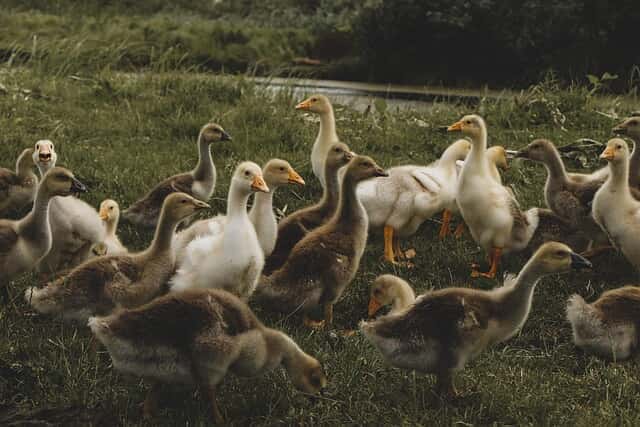
Startup requirements
You don’t need a huge barn or many acres to start. Extension guides suggest:
- Initial flock of 500–1,000 quail using existing sheds or outbuildings.
- A brooder area with heat lamps or brooders.
- A covered flight pen for birds to exercise.
- Waterers, feeders, and secure pens.
Quail and pheasants require careful handling and in some states, permits for release sales. Overall, capital investment can be just a few thousand dollars if repurposing farm structures.
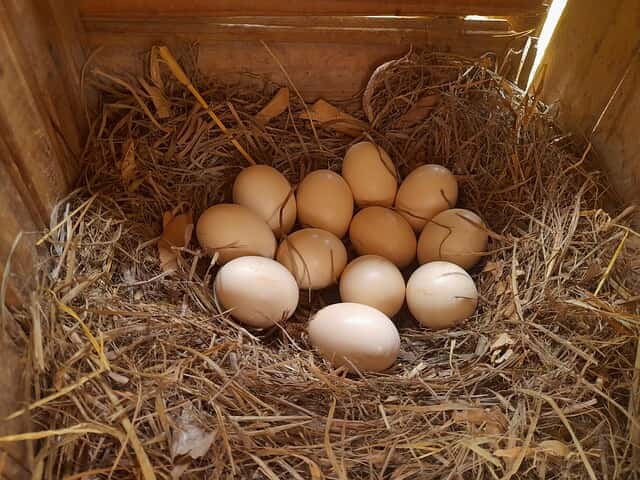
Income potential
Income streams include:
- Selling live birds in bulk to hunting preserves and field trial clubs.
- Supplying dog trainers with live quail for training.
- Selling quail and pheasant meat or eggs to restaurants and farmers’ markets.
Example: Pheasant meat retails at $2–$3 per pound dressed. A 2-lb carcass yields $4–$6 gross value per bird, but feed costs reduce profit. Many growers secure contracts a year ahead to guarantee sales.
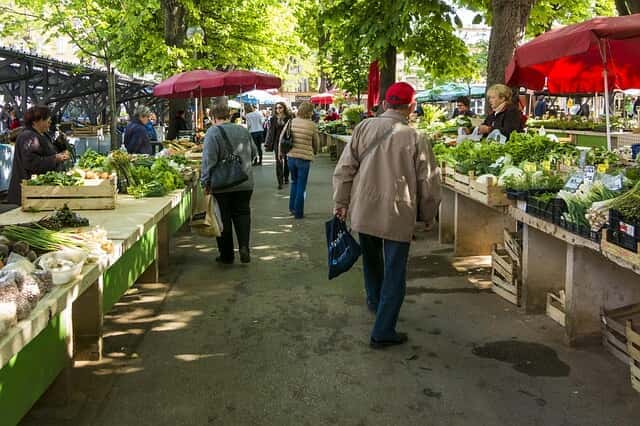
Market considerations
Before scaling up, research your local market:
- Hunting plantations, preserves, and breeders often prefer local sourcing.
- Restaurants may buy dressed birds, but meat sales may require USDA or state licensing.
- Main markets include hunting preserves, dog trainers, and restocking programs.
- Secondary markets include gourmet food outlets and egg sales.
Start small, focus on quality, and build a reputation. With minimal land and modest investment, specialty birds can add a reliable income stream.
Renting Out Land for Deer Hunting (Leases and Permits)
If your farm includes woodlots or fields, hunting leases can turn that land into yearly passive income. Deer hunting is extremely popular throughout the Southeast, and many hunters are willing to pay landowners for exclusive access to good hunting property. Even a small poultry farm (15–30 acres) can lease out its wooded corners or back pasture for local hunters, especially if the surrounding area has deer activity. For new farm owners, leasing land for hunting is attractive because it requires very little work on your part – essentially, you’re charging for permission to hunt, and the hunters do the rest.
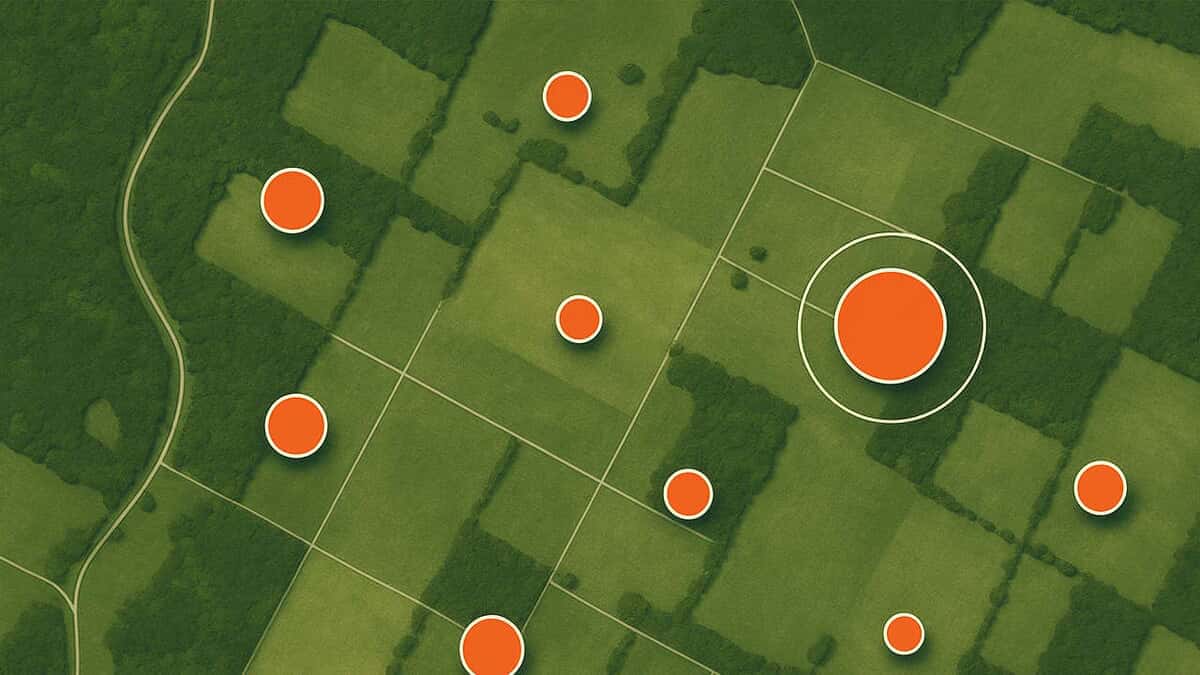
Income potential
Income potential: Lease rates vary by location and land quality, but extension surveys and wildlife experts provide some benchmarks.
- In Georgia, for example, deer hunting leases average about $10 per acre annually according to a statewide survey of 134 hunting leases
- That means if you have 100 acres of huntable land, you could gross around $1,000 a year by leasing it to a local hunt club or a few individuals.
- In Alabama, leases have historically been a bit cheaper on average (one survey showed about $5–$6 per acre statewide)
- Top-quality trophy deer land can command higher prices.
- Rates can range from as low as $0.50 per acre for small-game land up to $25 per acre for prime big-game (deer/turkey) hunting land in some areas
- The highest prices tend to be closer to cities or in renowned hunting counties.
- Georgia Outdoor News reported lease prices in Georgia commonly falling between $10 and $20 per acre, with a median around $9.97
In short, a small farm might earn a few hundred to a few thousand dollars per year from hunting leases, depending on acreage and local demand. It’s not huge money, but it can easily cover your property taxes (indeed, many landowners use hunting rent specifically to offset taxes on their land.
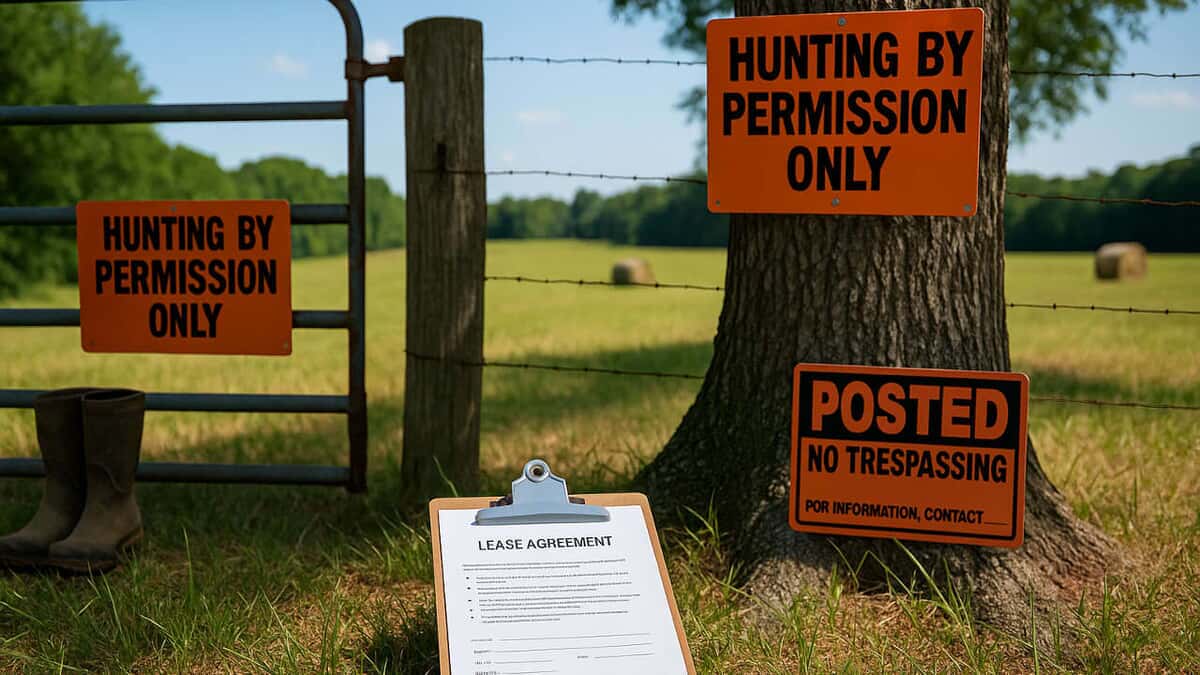
Practical setup
Practical setup: To lease your land for hunting, you’ll want to outline clear terms and maybe use a simple written agreement.
- Decide on the lease duration (a full year is common, allowing hunting of various seasons) and the number of hunters allowed.
- Many landowners in the South lease to established hunting clubs or groups of friends.
- For example, you might lease 20 acres to 2–3 local hunters for the deer season for a flat fee.
- Make sure everyone understands rules like no hunting near the poultry houses, no guests without permission, and no ATVs if you want to avoid land damage.
- Alabama and Mississippi extension experts recommend having a written lease with rules to protect your property (e.g. no littering, no tree cutting, proper safety measures)
Liability is another consideration – posting “Hunting by Permission Only” signs and having hunters sign a liability waiver can help, and your farm insurance policy might need an update to cover recreational use.
Fortunately, many Southeastern states have landowner liability protections for leased hunting land, but it’s wise to check local laws or consult an attorney if you’re unsure
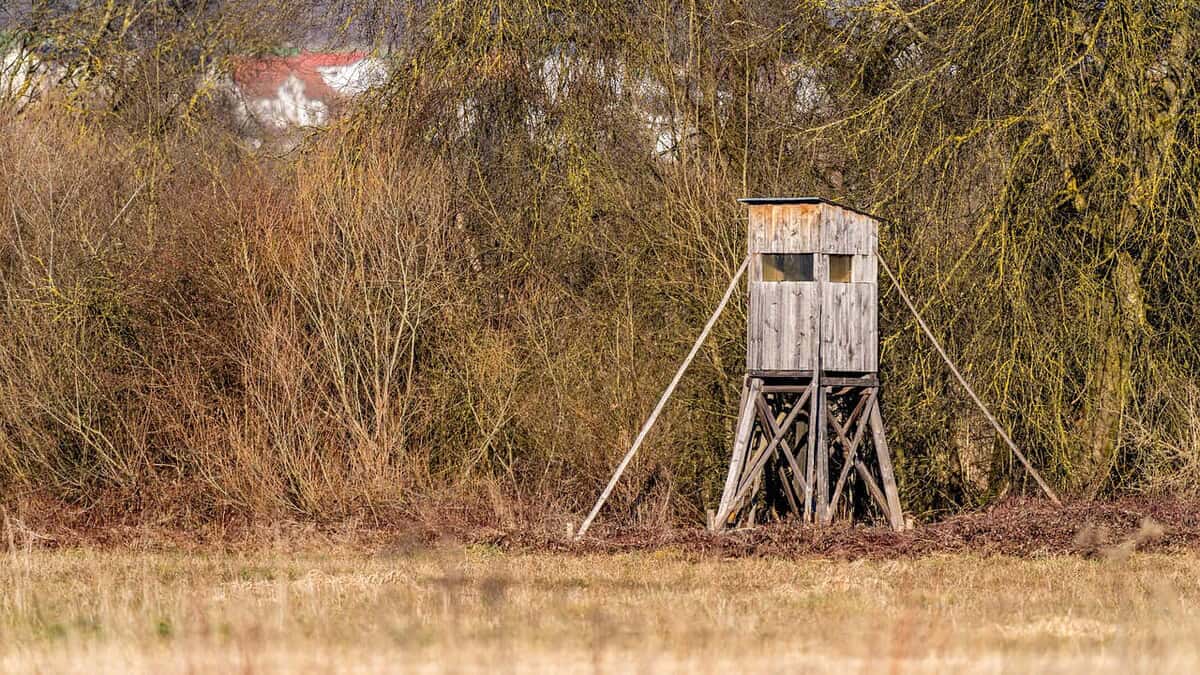
Why it’s a good fit
Why it’s a good fit: For small-scale farm investors, a hunting lease is a low-effort, steady revenue stream that leverages unused land.
- Rather than your back forty sitting idle, it can host a couple of deer stands each fall.
- The Southeast has robust hunting communities – Georgia alone has roughly 392,000 hunters spending 8.9 million days afield each year
- Demand for private land access is strong.
- Just be sure to vet potential lessees (responsible, ethical hunters are worth their weight in gold)
If managed well, a deer lease can be a win-win: hunters get a reliable place to enjoy their sport, and you get extra income and potentially some free land management (many clubs will help maintain trails, plant food plots, or control pests as part of the deal). It’s an ideal side gig for farm owners who don’t mind sharing their land for outdoor recreation.
Using Spare Land for Produce Gardens or Grazing
Contract poultry farming doesn’t typically occupy all your acreage – so why not put that extra land to work? In the Southeast’s climate, you have options: you can plant a small produce garden (or even a U-pick orchard or pumpkin patch), or use open fields for grazing cattle or other livestock. Turning unused acres into productive farmland can diversify your income and make the most of your investment. Here, we’ll look at two paths – growing crops on a small scale, and raising or boarding grazing animals – both suitable for first-timers with limited acreage.

Vegetable or fruit gardening for local markets
“Locally grown produce” is in high demand across the Southeast, as consumers flock to farmers’ markets and roadside stands for fresh, home-grown vegetables that haven’t traveled across the country
extension.uga.edu.
- High-value crops can gross $10,000+ per acre annually, especially with direct-to-consumer sales.
- Startup costs may reach $34,000 per acre, including irrigation, fencing, equipment, and labor.
- Even a 2-acre market garden requires constant effort in planting, weeding, harvesting, and marketing.
- Profit margins can be 25–30% for well-managed small farms.
- USDA organic certification allows premium pricing, but comes with strict rules and fees.
The Southeast’s long growing season allows nearly year-round harvests. While rewarding, produce gardening is labor-intensive and best approached gradually – start small and scale as experience grows.
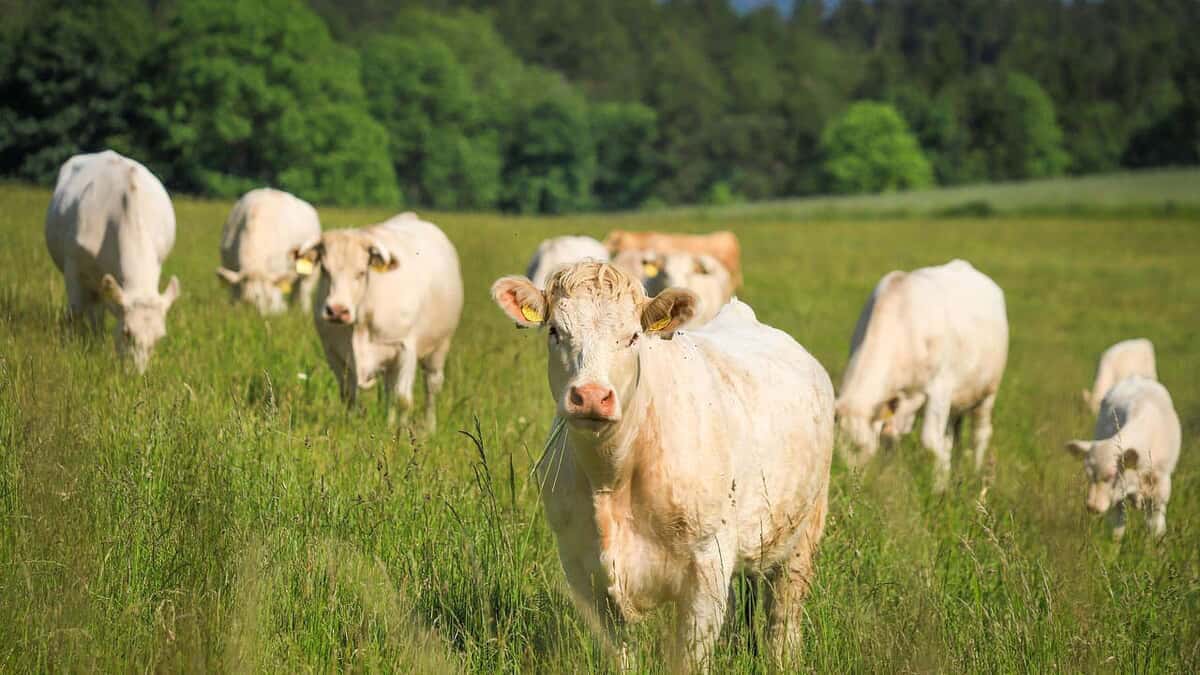
Cattle grazing or pasture rental
If crops aren’t your passion, consider pasture use. Many poultry farmers in Alabama and Georgia keep cattle or goats, or lease land to neighbors needing grazing space.
- Pastureland rental in Alabama averaged $24/acre in 2023; Georgia’s average was $31.
- Typical Southeast grazing rents run $20–$40/acre.
- Leasing out land requires minimal effort if tenants handle fencing, water, and daily care.
- Raising your own herd: 5–10 cows on 20 acres could produce calves worth ~$800–$1,000 each at market.
- Alternative: sell farm-to-freezer beef directly to families, or cut hay for sale or lease fields for hay production.
Getting started: Ensure fencing and water availability, and document responsibilities in a lease agreement. If raising cattle, start small and consult extension resources for stocking rates and herd health.
Poultry contracts generally allow cattle and crops but prohibit other poultry or hogs due to disease risk. With good management, cattle or pasture leases can provide reliable side income while maintaining your land.
Using your extra space for crops or cattle can be a fulfilling way to diversify. It taps into the region’s rich agricultural heritage – whether you join the ranks of small truck-crop farmers supplying local produce stands, or become a “weekend rancher” with a few cows grazing under the Georgia pines. The key is to match your interests and resources: growing vegetables requires a green thumb and time; raising or hosting livestock requires land and some husbandry know-how. Both can yield supplemental income that bolsters your overall farm profitability and makes your investment more resilient.
Selling Chicken Litter as Organic Fertilizer
Broiler chickens are essentially little fertilizer factories. Every flock you raise produces tons of chicken litter – the mix of manure and bedding (wood shavings, rice hulls, etc.) that accumulates on the floor of your poultry houses. Instead of viewing litter as a waste to dispose of, savvy growers turn it into organic gold by selling it as a natural fertilizer. In the Southeastern US, poultry litter is in high demand among crop farmers, hay producers, and even home gardeners, because it is rich in nutrients and organic matter. Recycling this byproduct not only brings in extra cash but also exemplifies sustainable farming.
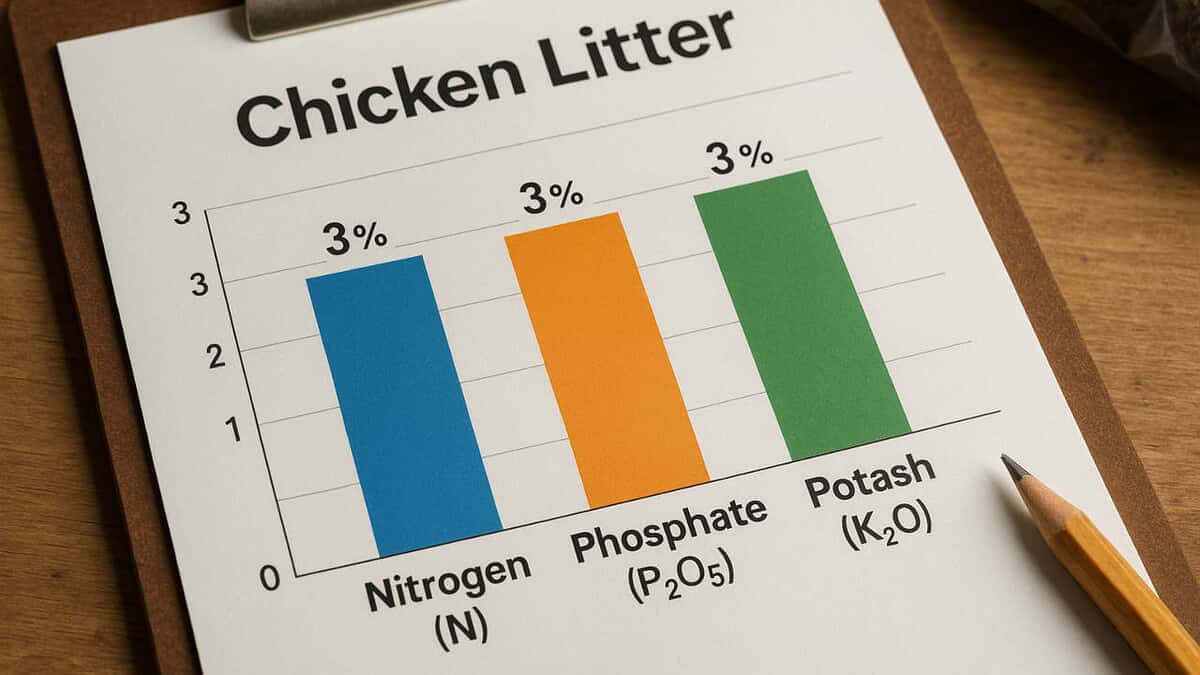
How much is it worth?
The value of litter can be measured in two ways: its nutrient value and its market price.
- On average: 60 lbs nitrogen, 60 lbs phosphate, and 50 lbs potash per ton
- Nutrient value: ~$80/ton compared to commercial fertilizer
- Georgia produces ~2 million tons annually worth $160 million in nitrogen content
- Market prices range from $15–$50/ton depending on supply and demand
- Example: A 20,000-bird house yields ~150 tons/year. Two houses producing 100 tons at $30/ton = $3,000 extra income
Prices are lowest in poultry-dense areas, higher where row-crop farmers compete for organic fertilizer.
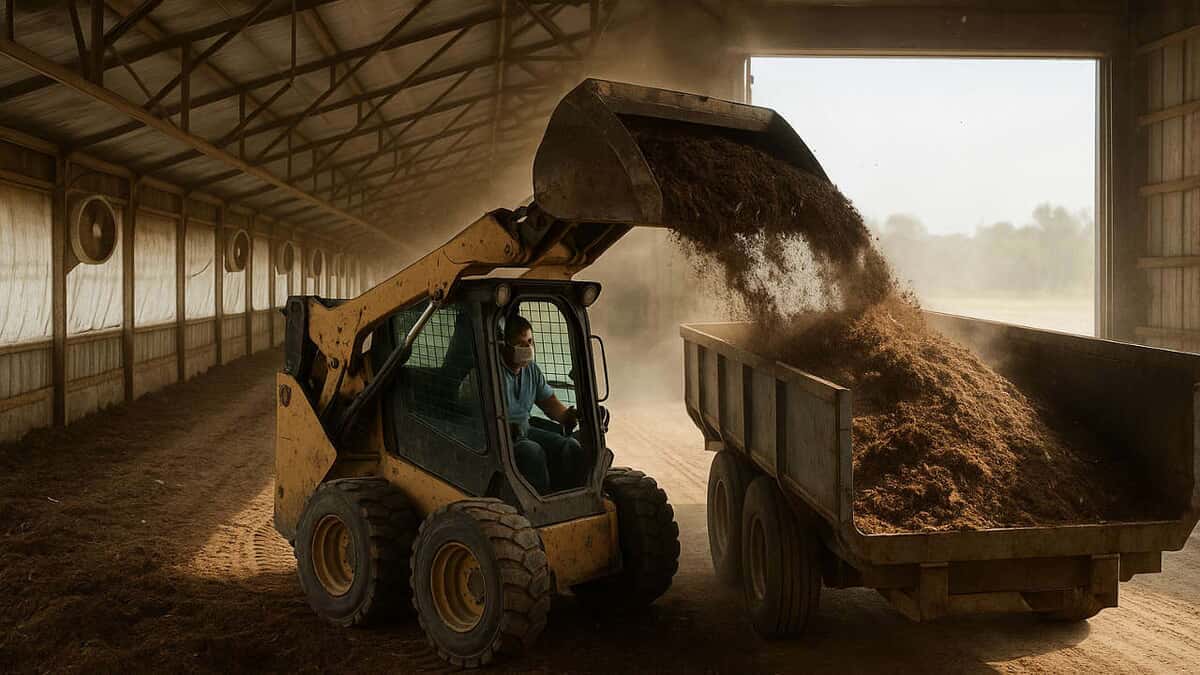
Practical considerations
How to sell litter:
- Integrators or farm co-ops can connect you with buyers.
- Contractors may clean out houses and haul litter away, paying per ton or as a service.
- Row-crop farmers want litter delivered before spring planting.
- Store litter properly (roofed shed or covered pile) to avoid nutrient loss
utia.tennessee.edu. - Composting for bagged retail sales requires more handling and permits.
- Bulk sales are most common – e.g., hay farmers pay by the ton and haul it away.
- Keep nutrient analysis records; buyers may request N-P-K values.
- Check state regulations on nutrient management or transport permits.
Overall, selling poultry litter is an established practice in the Southeast and an easy way to monetize a byproduct.
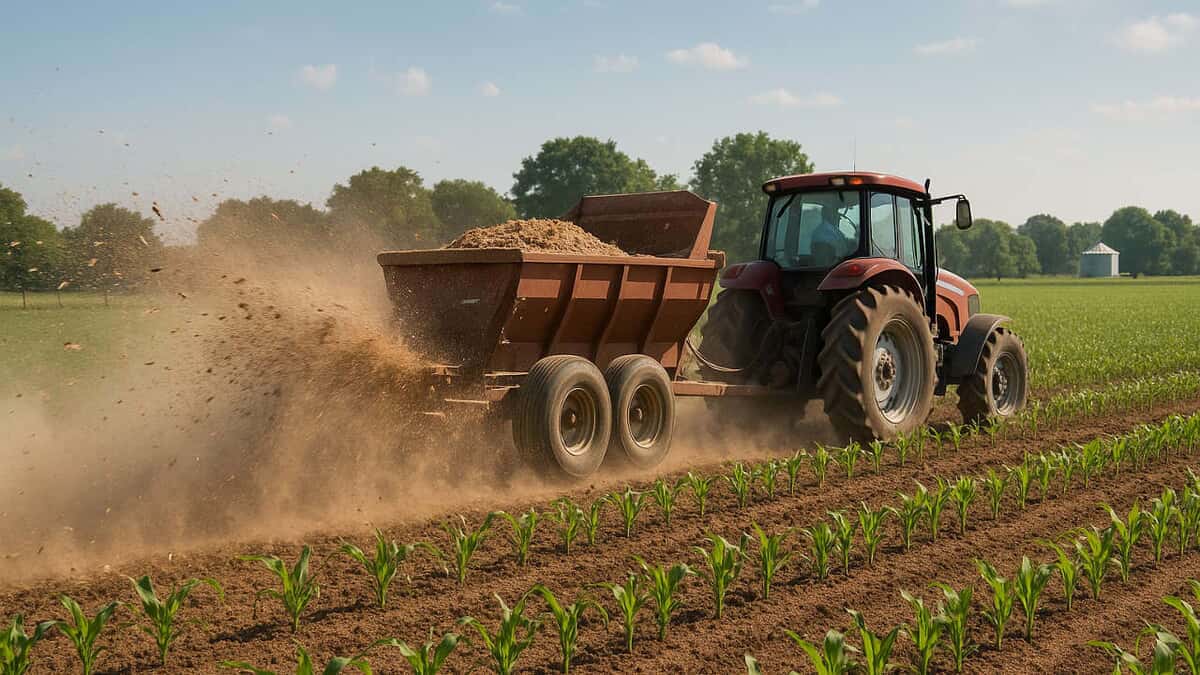
Market outlook
The market for organic fertilizers like litter has been growing.
- High fertilizer prices increase demand for litter
- Litter adds nitrogen, phosphorus, potassium, calcium, sulfur, micronutrients, and organic matter
- Improves soil health, especially in Coastal Plain regions.
- Organic certified farms may buy litter if it meets standards – composting may be required.
- Transforms a byproduct into a steady revenue source while supporting sustainability.
Selling litter is a smart, easy win: you clean houses for biosecurity and get paid in the process.
Conclusion
Investing in a poultry farm is not just about raising chickens – it’s about managing a piece of land in a way that maximizes its value. The Southeastern United States offers a favorable setting for these complementary ventures, from its hunting traditions to its long growing season and large agricultural community.
By adding one or more alternate revenue streams like the four outlined above, a first-time farm owner can improve cash flow, buffer against poultry market fluctuations, and learn new skills. Whether you choose to raise a batch of quail, lease your woods to hunters, plant a profitable garden, graze a few cows, or sell nutrient-rich litter to neighbors, you’ll be diversifying your farm’s income in a practical, proven way.
Start small, do your homework (your state extension service is a fantastic resource for enterprise budgets and guidance), and grow your side ventures at a comfortable pace. With time, these complementary streams can collectively become a significant contributor to your farm’s profitability – all while keeping you engaged with the land year-round.



